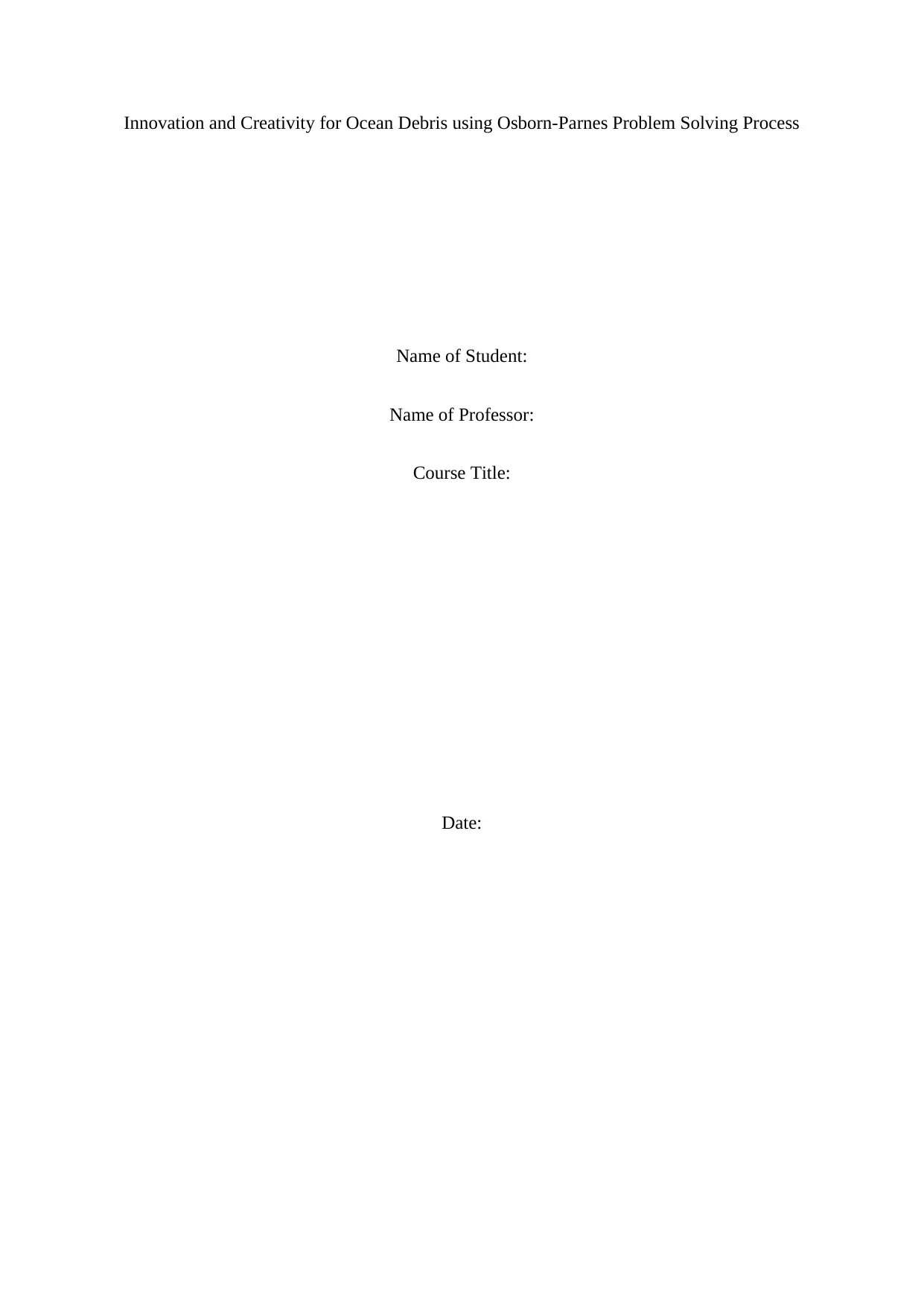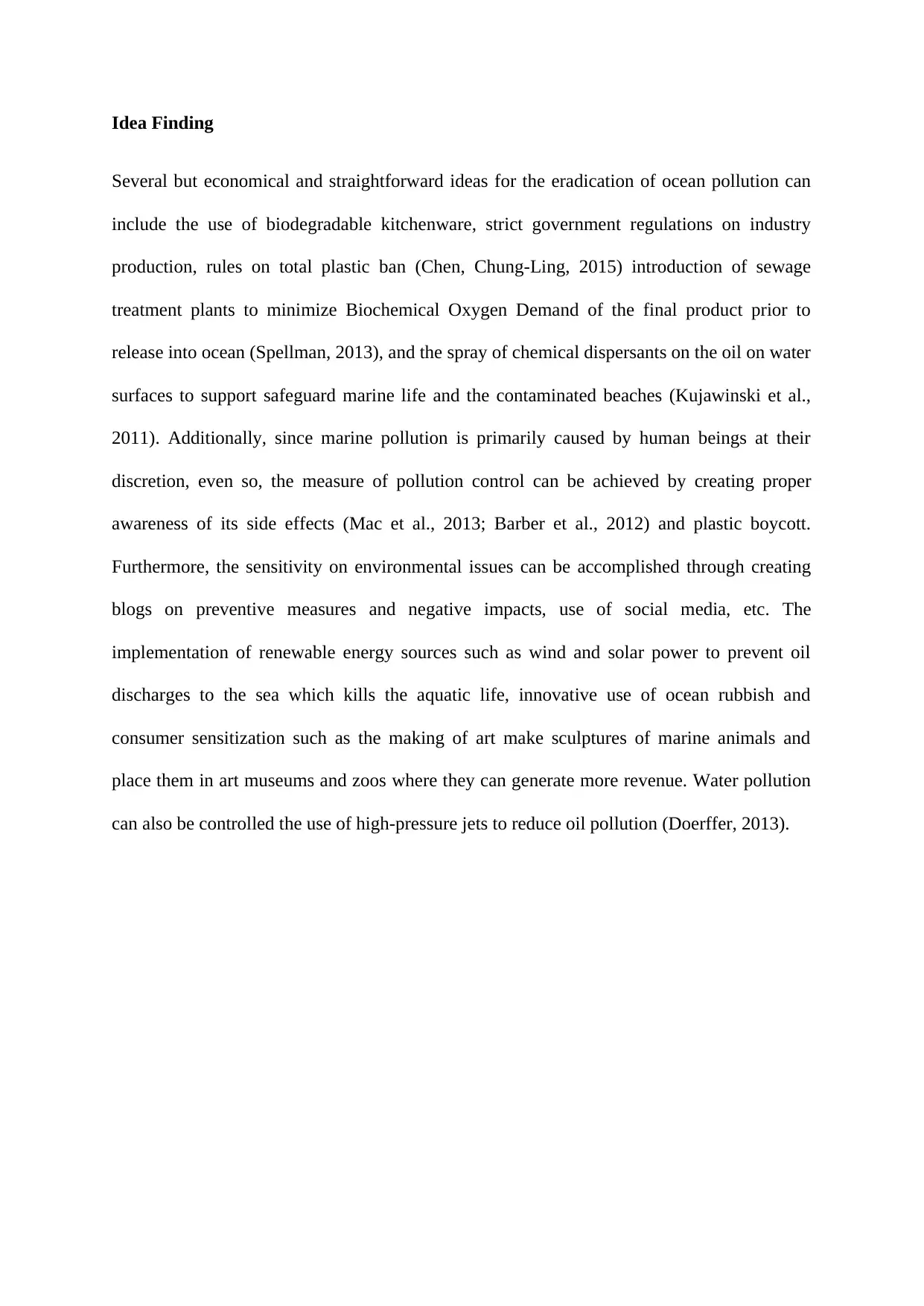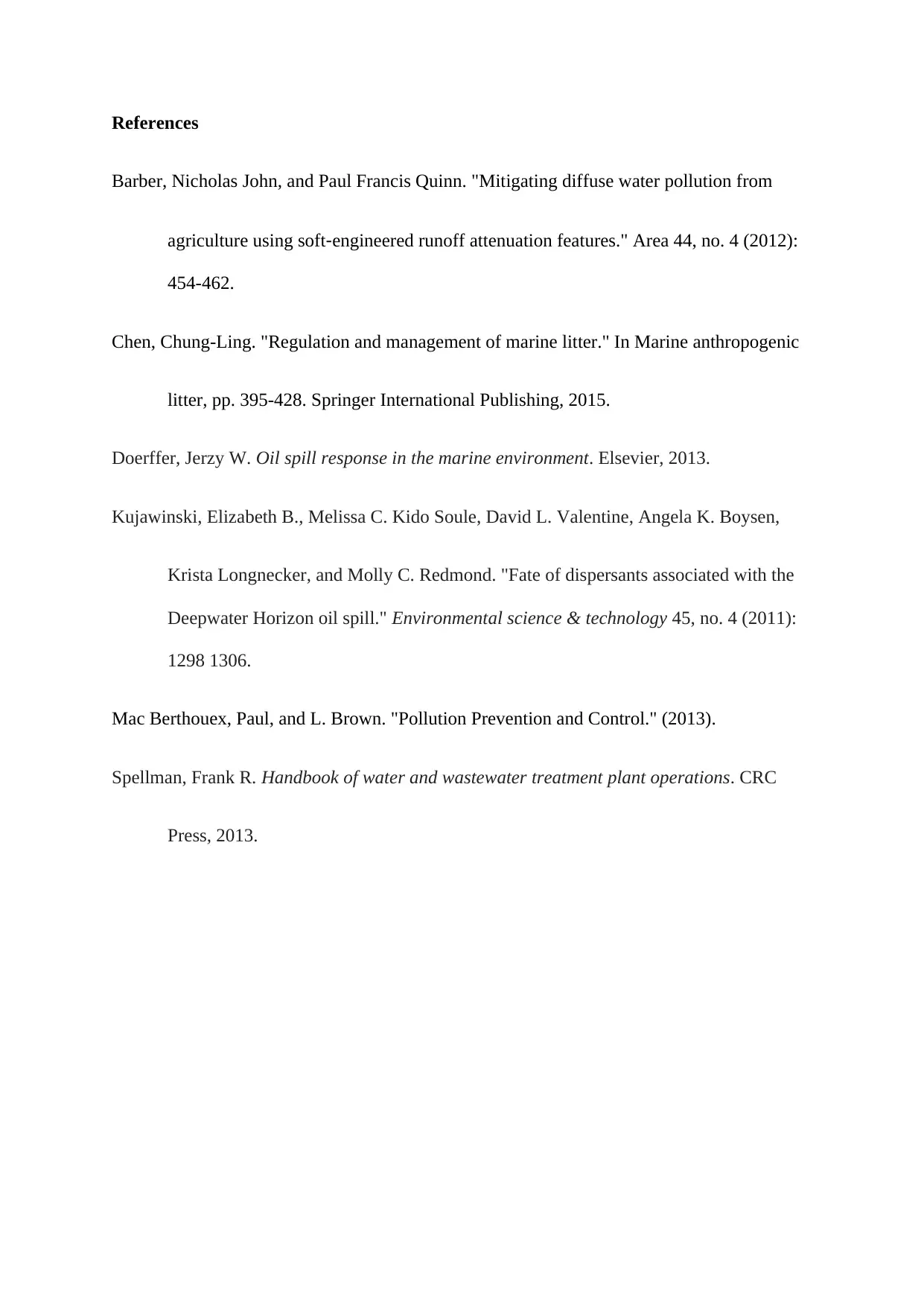Report: Innovative Solutions for Ocean Debris and Pollution Management
VerifiedAdded on 2020/04/15
|3
|451
|50
Report
AI Summary
This report presents innovative and creative solutions for addressing ocean debris and pollution. It explores various approaches, including the use of biodegradable materials, stringent government regulations, and the implementation of sewage treatment plants to minimize Biochemical Oxygen Demand. The report also discusses the use of chemical dispersants for oil spills, the importance of public awareness, and the adoption of renewable energy sources like wind and solar power. Furthermore, it suggests creative initiatives such as making art sculptures of marine animals to generate revenue and high-pressure jets to reduce oil pollution. References from various sources are included to support the proposed solutions.
1 out of 3




![[object Object]](/_next/static/media/star-bottom.7253800d.svg)